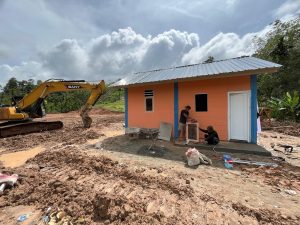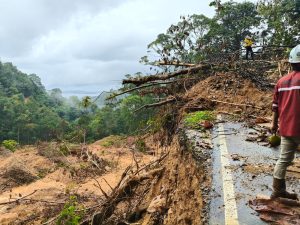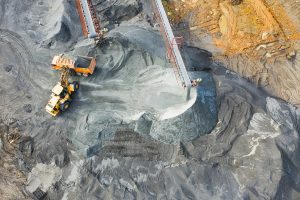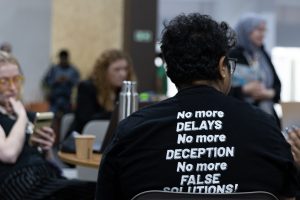Jakarta – The government’s decision to revoke four out of five nickel mining licences operating in Raja Ampat, Southwest Papua, has been appreciated by Greenpeace Indonesia. However, the environmental organisation urges the government to immediately issue an official decree and ensure permanent protection for the entire Raja Ampat ecosystem.
Greenpeace’s Global Head of Indonesia Forest Campaign, Kiki Taufik, on Tuesday, 10 June, called the revocation of the IUP “a bit of good news and an important step towards the full and permanent protection of Raja Ampat from the nickel industry that threatens the environment and people’s living spaces.” He added that this decision was the result of the struggle of various elements of society in Raja Ampat, including indigenous peoples and local communities who are members of the Raja Ampat Nature Guard Alliance.
The four companies whose IUPs were revoked are PT Kawei Sejahtera Mining (Kawe Island), PT Anugerah Surya Pratama (Manuran Island), PT Mulia Raymond Perkasa (Manyaifun and Batang Pele Islands), and PT Nurham (Waigeo Island).
Comprehensive protection and fear of recurrence
Despite its appreciation, Greenpeace Indonesia highlighted the importance of public transparency. “We appreciate this decision, but we are waiting for an official decision letter from the government that can be seen openly by the public,” said Kiki Taufik.
Furthermore, Greenpeace is calling for more comprehensive protection. “We also continue to demand full and permanent protection for the entire Raja Ampat ecosystem, with the revocation of all active and inactive mining licences,” Kiki added. This concern arises from past precedents, where revoked permits have been reissued, including in Raja Ampat, due to company lawsuits.
Greenpeace also invites the public to continue to oversee the process of restoring areas damaged by mining. “Greenpeace Indonesia invites the public to continue monitoring the government’s steps in restoring areas that have been damaged by mining so that they return to their ecological functions,” said Kiki.
She highlighted the power of public movements in driving change.
“The #SaveRajaAmpat campaign has been a tangible proof and hope that when people continue to speak out and unite, we can push and create change together,” said Kiki Taufik, while appreciating the public support through the #SaveRajaAmpat hashtag and more than 60,000 petition signatories.
Conflict resolution and sustainable development
Greenpeace also urges the government to immediately resolve social conflicts arising from the existence of the mine and ensure the safety of the people who reject the nickel mine in Raja Ampat. Kiki Taufik also emphasised the need for the government to focus on developing sustainable tourism ecosystems that favour indigenous peoples and local communities, as well as ensuring an equitable transition and guaranteeing workers’ rights in the mining sector.
Not only in Raja Ampat, Greenpeace called for a thorough evaluation of nickel mining licences on other small islands in eastern Indonesia, which it said had caused “ecological devastation and made life miserable for indigenous and local communities.” They emphasise that all development in Indonesia, especially in the Land of Papua, must uphold the principles of humanity, justice, meaningful public engagement, and free, prior and informed consent when involving indigenous peoples and local communities. (Hartatik)
Banner photo: Several residents of Manyaifun Village, together with Greenpeace Indonesia activists, posed for a photo with a banner reading ‘Save Raja Ampat, Stop Nickel’ and ‘Selamatkan Hutan Papua’, with Manyaifun Village and the hills of Batang Pele Island in the background. Batang Pele Island is a tourism destination that also falls within a protected forest area and is part of the UNESCO Global Geopark. Currently, a nickel mining business permit is being proposed for the island by PT Mulia Reymond Perkasa, covering a concession area of 2,193 hectares, which includes both Manyaifun Village and Batang Pele Island. © Alif R Nouddy Korua/Greenpeace














